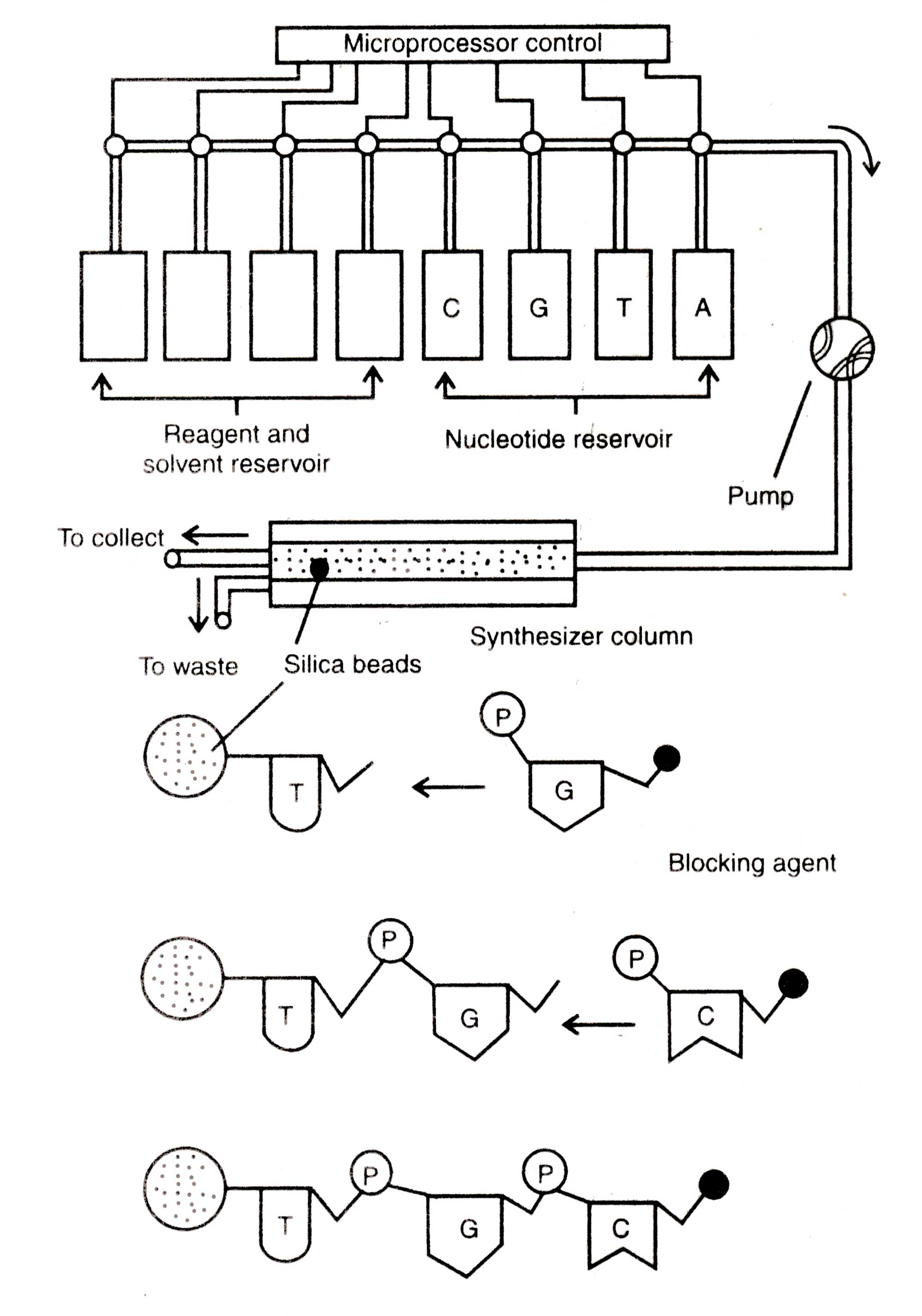Gene Machine
The mechanism of a gene machine is shown in Fig. 2.14. Four separate reservoirs containing nucleotides (A,T,C and G) are connected with a tube to a cylinder (synthesizer column) packed with small silica beads. These beads provide support for assembly of DNA molecules. Reservoirs for reagent and solvent are also attached. The whole procedure of adding or removing the chemicals from the reagent reservoir in time is controlled by microcomputer control system i.e. microprocessor.
If one desires to synthesize a short polynucleotide with a sequence of nucleotides T,G,C, the cylinder is first filled with beads with a single 'T' attached. Thereafter, it is flooded with 'G' from the reservoir. The right hand side of each G is blocked by using chemicals from the reservoir so that its attachment with any other Gs can be prevented. The remaining Gs which could not join with Ts are flushed from the cylinder. The other chemicals are passed from the reagent and solvent reservoirs so that these can remove the blocks from G which is attached with the T. In the same way this cycle is repeated by flooding with C from reservoir into the cylinder. Finally the sequence T.G.C is synthesized on the silica beads which is removed chemically later on.





